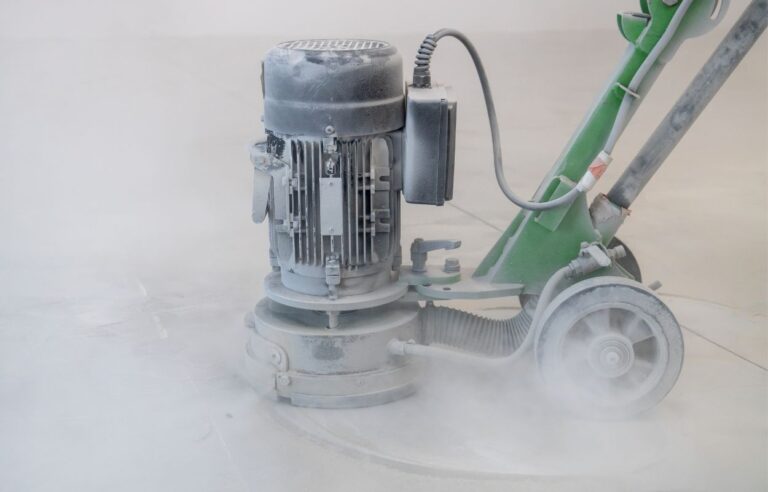
If you own or manage an older commercial building, chances are you’ve heard about asbestos. It’s that once-popular construction material that has become infamous for its health risks. You might wonder if asbestos is a big deal or if it’s just another buzzword. Let’s dive into why asbestos abatement is essential, especially for older buildings, and how it can protect both people and property.
WHAT IS ASBESTOS, AND WHY WAS IT USED?
Asbestos is a naturally occurring mineral that was widely used in construction materials throughout the 20th century. It’s durable, resistant to fire, and provides excellent insulation. Sounds great, right? That’s why it was used in everything from ceiling tiles and drywall to floor adhesives and insulation.
Unfortunately, scientists discovered that asbestos is dangerous when its fibers become airborne. When disturbed, asbestos fibers can be inhaled, causing serious health problems like lung cancer, mesothelioma, and asbestosis. These health risks have led many countries, including Canada, to heavily regulate or ban asbestos use altogether.
WHY ARE OLDER COMMERCIAL BUILDINGS A CONCERN?
Older buildings, especially those constructed before the 1980s, are likely to contain asbestos in some form. Even if the building looks pristine, asbestos could be hiding in the walls, ceilings, or flooring. As long as it stays undisturbed, asbestos is generally not a problem.
However, commercial buildings see a lot of wear and tear. Renovations, repairs, or even daily maintenance can disturb asbestos-containing materials, releasing those hazardous fibers into the air. Think about the high foot traffic, HVAC systems moving air, or minor accidents that could crack a ceiling tile or wall. All of these scenarios increase the risk of asbestos exposure.
THE HIDDEN DANGERS OF IGNORING ASBESTOS
Let’s be honest—dealing with asbestos isn’t anyone’s favorite task. But ignoring it can lead to bigger problems down the road. Health risks aside, there are legal and financial consequences for not addressing asbestos in a commercial property.
For starters, failing to handle asbestos properly can lead to hefty fines and lawsuits. Regulations require building owners to assess and manage asbestos risks. If you’re caught ignoring them, you’re not just putting people’s health at risk—you’re also putting your business’s reputation on the line.
Additionally, when asbestos issues come to light, they can scare away potential tenants or buyers. Imagine trying to lease or sell a property and having to explain why asbestos abatement wasn’t handled. It’s a tough conversation that can lower the value of your building.
WHY ASBESTOS ABATEMENT IN NANAIMO IS CRUCIAL
If your building is in Nanaimo, you know how much the city values health and safety. Asbestos abatement in Nanaimo is not just about following regulations—it’s about protecting your community. Whether your property is a bustling office space, a retail store, or an industrial facility, addressing asbestos ensures a safe environment for everyone.
Nanaimo’s unique mix of old and new buildings makes asbestos abatement especially important. Many structures have historical charm but may also have hidden asbestos risks. Abatement allows you to preserve the beauty and functionality of your building while eliminating potential hazards.
WHAT DOES ASBESTOS ABATEMENT INVOLVE?
The term “asbestos abatement” might sound intimidating, but it’s a straightforward process when handled by professionals. Here’s a breakdown of what to expect:
Inspection and Testing
The first step is to identify if asbestos is present. Professionals will inspect the building and take samples for lab testing. This step ensures you know exactly where the asbestos is and its condition.
Creating a Plan
If asbestos is found, experts will develop a customized abatement plan. They’ll determine the safest and most efficient way to remove or seal off the asbestos materials.
Removal or Encapsulation
In most cases, asbestos will be carefully removed. However, if it’s in a location where removal isn’t feasible, it may be encapsulated. Encapsulation involves coating the material to prevent fibers from becoming airborne.
Clean-Up and Disposal
Once the asbestos is dealt with, professionals will clean the area thoroughly to remove any remaining fibers. They’ll also dispose of the asbestos safely, following strict environmental regulations.
WHY HIRE PROFESSIONALS?
Asbestos abatement is not a DIY project. Handling asbestos without proper training and equipment can put you and others at risk. Certified abatement professionals have the skills, tools, and protective gear needed to do the job safely.
Professionals also understand local regulations and ensure that your building complies with them. If you’re in Nanaimo, hiring a qualified team for asbestos abatement gives you peace of mind knowing the job is done right.
INVESTING IN LONG-TERM SAFETY
Abating asbestos in your commercial building is an investment in safety. It’s not just about checking a box or avoiding fines—it’s about creating a healthy environment for everyone who uses the space. Tenants, employees, and customers all benefit from a safer building, and your property’s value increases as a result.
Think of it like maintaining your roof or HVAC system. These are proactive measures that keep your building in good shape and prevent costly problems later. Asbestos abatement is no different—it’s a necessary step to ensure your building remains a safe and welcoming space.
FINAL THOUGHTS
Asbestos may seem like a hidden issue, but ignoring it can lead to serious consequences. If your building is older, don’t take any chances. Schedule an inspection and address any asbestos concerns sooner rather than later.
When it comes to asbestos abatement in Nanaimo, the focus is not just on compliance but also on community well-being. By taking action, you’re protecting people, preserving your property, and setting an example for others.
Dealing with asbestos might not be glamorous, but it’s one of the most responsible things you can do as a property owner. So roll up your sleeves (or call the pros), and make your building a safer place for everyone.





